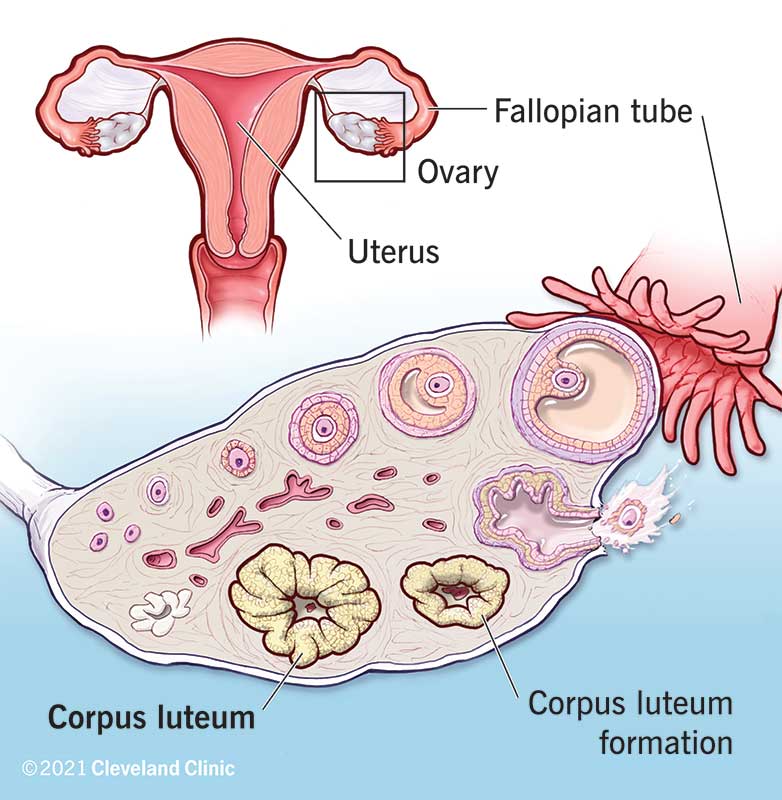Which of the following is a mass within the ovary that secretes hormones to maintain the uterine lining during pregnancy?
A. Oviduct
B. Corpus luteum
C. Oocyte
D. Umbilical cord
Corpus luteum. The corpus luteum is a temporary structure that forms from the ruptured follicle after ovulation. It produces progesterone, which is a hormone that prepares the endometrium (the inner lining of the uterus) for implantation of a fertilized egg. If pregnancy occurs, the corpus luteum continues to secrete progesterone until the placenta takes over.

Therefore, the Correct Answer is B.


